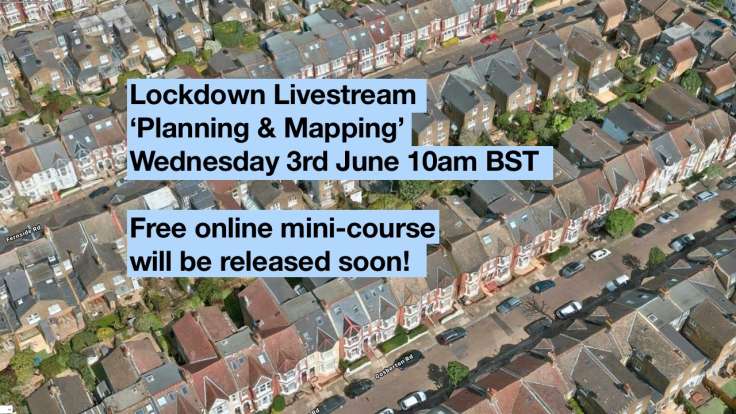
Random road in Balham, London, showing 3D view. Very useful for getting a sense of a place.
Fantastic livestream and Zoom Q&A today, thank you so much to everyone who took part, I hope you found it useful. All the information is great for me to build better courses and workshops.
I haven’t managed to launch my free mini-course yet, I hope to get the script written, the video recorded and edited and uploaded this week.
- YouTube recording: youtu.be/8cpqvCkG3V8
- Plan a Backyard Forest slides: forestgarden.wales/course/map
Course details
- Free mini-course - Plan a Backyard Forest
- Full course - Create a Backyard Forest
- Courses will be published on udemy.com rather than teachable.com, because Teachable is great platform, it costs about £40 per month for hosting.
- The full online course will cost about £20-30 (will need to confirm with Udemy).
- I plan to make my income from consultancy/mentoring/coaching, in combination with the course
Forest Garden Wales
Website www.forestgarden.wales YouTube Channel Twitter
Planning & map resources
- Forest Garden Planning Checklist
- Example random address: 29 Fernside Road, Balham SW12 8LN
- Apple Maps
- GroundStability.com
- Google Earth
- Bing.com OS maps
- QCAD
- LibreCAD
- Postcode Finder
Full course outline
- Intro
- Plan
- Design
- Windbreak
- Perennial Veg
- Canopy
- Ground Prep
- Shrubs & Ground Cover
Zoom Q&A
1. Chris: Can you please provide a list of resources for accessing information regarding rainfall and anything else that might be useful to know when considering your plans
- Think long term sustainability
- Water will get more scarce
- Grow perennials that don’t need watering.
- Establish your trees.
- Look at rainwater harvesting (no brainer) and grey water.
- Lightweight guttering taped to polytunnel into IBC water tank (Chris)
- Calculate how much water you use, using water meter if you have one. Here, for watering the polytunnel, annual veg and propagation area, use about 230 litres. The price from Welsh Water is about £1.70 per cubic metre, so that’s about 30 pence per watering session.
- Martin Crawford has information about creating a reservoir in Agroforestry News vol 23 no. 2, PDF available online (though pricey)
- Key detail:
- Design derives from maximum size of plastic pond liner: 25m x 6m
- Each reservoir 3.5m x 20m x 1m deep = 70 cubic metres
- Use gravity fed where possible
- Any water fed into pipes needs to be filtered
- Circulation requires powerful pump, MC uses 4 x 180W solar panels to power Lorentz pump
- Filter is an upwards-flow (much easier to clean) stone-gravel-grit system, using upcycled 1200 litre plastic water tank (previously used for transporting fruit juice):
- Bottom layer 30cm deep, 40mm stone
- Middle layer 30cm deep, 10mm gravel
- Top layer 30cm deep, 4mm grit
| | → clean water out
|--------|
| grit |
|--------|
| gravel |
|--------|
| stone |
|________| ← reservoir water in
2. Julie: has a 20m² area where shed used to be. Recommendation to keep the area clear?
- Depends on how long you want to leave but would recommend temporary ground cover of bark or wood chip, then sow White Mustard, which will die back in winter. Should keep weeds down. Good place for bulk buying seeds is Cotswold Seeds
- For longer term cover, consider other green manures eg clover. Again, Cotswold Seeds has lot of information about different green manures.
- Iain Tolhurst worth a look, vegan organic farm in Oxfordshire, also talk recorded on Roots and All podcast (search for “Tolhurst”).
Other notes
- Rob’s Discovery on YouTube
- Byther Farm on YouTube
- Alison Tindale at Backyard Larder backyardlarder.co.uk
- Mandy Barber at Incredible Vegetables incrediblevegetables.co.uk